FAREWELL MAX, INTRODUCING SANYA
We woke early, gazing out of our icicle encrusted hotel window across Lenin Square to a dark and bitterly cold looking day. Our Azimut Hotel had been very comfortable and a pleasant stopover and rest from our long travels.
But it was time to move on. Our destination for the day was Aykhal, another diamond mining settlement some 470 km north of Mirniy and a good seven and a half hours drive through the taiga winter roads.
We would also be saying goodbye to our driver Max who was heading back to Yakutsk with his wife Taya and daughter Masha. Here we would be changing to a local driver Sanya (diminutive of Alexander) who was from Mirniy and very familiar with the roads on our coming travels through the Mirninskiy, Olenyokskiy and Anabarskiy regions.
Initially we were somewhat surprised and perhaps a little disappointed that we would not have the easy going, competent Max for the duration of our travels north to Yuryung-Khaya. But Ed was an absolute stickler for safety. "I only ever contract people with genuine local knowledge for my tours. It is just too dangerous in these Arctic regions to assume that any driver can take on a route with which they are not absolutely familiar." he maintained. "And they really must have good reliable contacts within the region. Just in case anything goes wrong" he was careful to add. Only sometime later were we to realise the critical importance of Ed's concerns for safety - and reliable contacts...
As we left our hotel, Max came down to say farewell. We were as always, saddened to say goodbye to drivers like Max with whom we have developed an easy and special relationship. We promised to stay in touch. And we have.
Sanya was waiting for us outside the hotel with his gleaming black Land Cruiser. A quiet and reserved man, Sanya was however highly experienced; his main occupation being a professional driver for government officials in the Mirninsky and Extreme Arctic North regions. As we were to find, like Max, he was very competent; good company and kind. Just a bit harder to get to know.
Sanya's car was a top of the range vehicle, very comfortable and with a surprising amount of leg space in the rear passengers' compartment. And it was immaculate. Soon we were speeding through Mirniy town for a last look at the mine, and what Ed hoped would be better conditions for photographs.
After our freezing wind-blasted experiences with photographing the mine the evening before, we stayed firmly inside Sanya's warm car while Ed clambered back up on the watch towers hoping for better photo opportunities. We laughed, recalling our difficulty in finding the mine the day before. It is actually the hugest scar on the landscape, Yes, impossible to miss really....
A BIT ABOUT THE DIAMOND LANDS OF MIRNINSKY ULUS....
The District at a Glance
Mirninskiy Ulus is located on the western side of Sakha Republic. To the north it borders the massive Olenyokskiy District, the Nyurbinskiy and Sunatrskiy Districts to the east, Lenskiy to the south and Irkutsk and Krasnoyarsk to the west. It occupies a total area of 165,800 km - larger than the size of England.
The Mirninsky Ulus is divided into the two administrative towns of Mirniy (population estimate 40,000) and Udachny (6,700), four administrative urban settlements of Aykhal (13,700), Chernyshevsky (5,000) Svetly (3,140) and Almazny (1,460); and another eight small rural settlements.
The estimated population of Mirninskiy is around 76,000 with the majority living within the administrative centre of Mirniy town.
Like Lensky District, the dominant population is ethnic Russian (around 68%) with the remaining population comprising Ukrainians (~10%), Yakut (~8.0%) and Tatars (~7 %).
The economy of Mirninskiy is based almost exclusively on mining, mainly diamonds; an industry dominated by the mining company ALROSA. Other natural resources include oil, gas and brown coal.
The main river crossing through Mirninskiy is the Vilyuy. At a length of 2,650 km, it is the longest tributary of the Lena River. It has a massive drainage basin of some 491,000 square km.
Brief History of Mirninskiy
Mirninskiy was inhabited by indigenous Tungus Evenk and Even, and Mongolian tribes between the late 13th to 17th centuries. They developed a distinct language, spiritual and social culture; what became known as the Sakha ethnos. During this time, the Sakha inhabited the Vilyuy River Basin as traditional herders.
In 1628, Russian Cossacks entered the region, annexing the area to the State and introducing intensive farming and industrial development.
During the Soviet Period, State farming practices replaced indigenous traditional herding practices, concentrating small settlements into massive State farm operations. From documentation, these practices placed significant stress on the already fragile northern ecosystem.
In the early 19th century, the Vilyuy River Basin was believed to contain significant mineral deposits. During this time, famous Russian explorer, naturalist and geographer Richard Maak travelled much of the Vilyuy region, reporting rich deposits of iron, salts and precious stones. But it was not until the beginning of the 20th century that scientists and geologists noted similarities between these Siberian regions and the diamond rich areas of South Africa.
In 1937, the Soviet government began to mine for diamonds mainly in the western Urals. The first officially recorded discovery of diamonds in Sakha was made in 1949 along the Vilyuy River. In 1954, the first kimberlite deposit was discovered (refer below Sarsadskikh and Popugaeva). Further exploration during 1955 found fifteen primary diamond deposits, including the largest pipes at Mirniy and Udachny to the north.
Access roads and airports were built. And a huge hydro-electricity dam was constructed at Chernyshevsky on the Vilyuy River; the power later being extended to Aykhal and Udachny in the north of Mirninsky Ulus. The town of Mirniy (meaning City of Peace) was founded in 1959 and the Mirninskiy District was formally established in January 1965 when large-scale diamond mining really got underway.
TOWARD CHERNYSHEVSKY EN ROUTE TO AYKHAL
A Brief Drive Through Mirniy Town
We regretted having only a fleeting look at Mirniy town. But when you are travelling in extreme Arctic conditions for distances such as our 3,000 km journey to Yuryung-Khaya, you don't have the luxury of exploring in detail too many of the towns on the way. And anyway, apart from the mine and a fine Orthodox Church, it appeared there was not a lot to see at Mirniy.
Soon we were heading off north toward our next destination of Aykhal via the hydroelectricity township of Chernyshevsky, stopping for a visit to a wildlife park "Living Diamonds" just out of Mirniy.
As mentioned, Alan and I are definitely not great tourists; a tour guide's nightmare I would say.... We really detest anything contrived and touristy, and are not at all comfortable with most nature parks. So we couldn't really blame Ed for not asking us whether we wanted to see the Living Diamonds Park. And having not visited it himself, I guess he wanted to suss it out for future tours. After all, this was the first formal tour he had conducted in the Mirninsky region. Prior to our travels Ed had told us it was also the first time foreign tourists would travel through the region to Anabar. But quite frankly, this sounded a bit far-fetched and we took little notice. A travel agent's promotion line, we assumed.
And on a bleak and bitterly cold morning we headed along the frosty Anabar Highway to the Living Diamonds, a wild animal reserve largely funded and supported by the diamond mining giant ALROSA. One thing in our favour we conceded was the certainty in these remote parts of Russia, that we would not be battling with hundreds of tourists....
A Visit to the Living Diamonds Nature Park
Needless to say, there were no visitors at the park. In fact, there was no-one at all. Just well-timbered yards with shelters, housing a variety of contented looking animals, ranging from the elegant pretty Siberian Deer to the ungainly Bison look-alike Musk Ox, as well as Yaks and a particularly friendly Moose. Some of the park officials must have been around as the animals were still feeding on generous amounts of hay and silage.
There was no signage we could see and in the bitter morning cold, we were thankful that there was no lengthy guided tour. We were also pleased to see the park obviously well maintained and the animals looking so happy and well cared for.
The Siberian Deer put on quite a performance for us anyway, frolicking and charging around their yards. Meanwhile our gentle Moose friend urged over the fence for cuddles, whimpering in a curious fashion as we scratched his neck. What lovely animals Moose are; their elongated floppy muzzles giving them a very comical appearance.
The reason for their long noses is apparently unclear. Some researchers claim it allows the animals to close their nostrils while seeking out aquatic plants. But what use would it be in the snowy environs of frozen Siberia, we wondered? Perhaps eking out snow covered vegetation? Or maybe foraging for food in the shallow, snow melted summer lakes?
Another curious Moose phenomenon is that their nostrils are positioned facing away from each other. Again, the reason is unclear although most animal researchers agree it is most probably to enhance their sensory receptors in searching out other Moose. They are after all, solitary and not herd animals. Remarkable creatures, the Moose.
.
I was particularly taken with our Moosey friend. Perhaps I had seen too many Walt Disney cartoons of the famous Bullwinkle? I also tried hard not to think of the Moose soup we had enjoyed so much in Magadan.... Here is a short video clip of our friendly Mirniy Moose: https://youtu.be/2MfPFSYr2fI
There were other exhibits such as heated pens of pigeons and even several peacocks and peahens. But the larger, and for us much more exotic animals, were far more interesting and were friendly enough to see up close.
We had to admit that ALROSA ran a very professional and impressive nature reserve. And to our surprise, we had to admit we did actually enjoy our visit....
CONVERSATIONS: THE MINING INDUSTRY IN MIRNINSKIY
Geological Expeditions of the Mid-19th Century: Discovery of the First Diamonds by Two Determined Women.
As we sped along the icy taiga road toward Chernyshevsky, we talked with Ed about the hardship of the early geological expeditions, the difficulties of mining in a permafrost environment, and also about the future of the so-called diamond mining mono-cities (and towns) of Mirninsky.
Interestingly, the first kimberlite deposit in Siberia "Zarnitsa" was discovered in 1954 by two woman geologists Natalya Sarsadskikh and Larisa Popugaeva. Unfairly however, recognition for their remarkable discovery was not granted until a considerable time later - 1970 for Popugaeva and in 1990 for Sarsadskikh.
Discovered in the Mirninskiy region not far from Aykhal and Udachny, the name for their kimberlite pipe "Zarnitsa" literally means "heat lightning". At the time of discovery, the kimberlite was greatly underestimated and little did anyone realise at the time the significance nor the potential enormity of the find. And obviously, nor the extraordinary achievement of two resolute and highly skilled women geologists.
It is impossible to contemplate the conditions the early geologists and their teams would have endured during their investigative visits to Mirninskiy. Understandably, the explorations were undertaken in the warmer summer months. During this time, it was almost impossible for the explorers to forge their way through the network of melted lakes and muskeg conditions with no made-roads, and the intensity of mosquitoes and other biting insects in these summer swampy regions must have been abysmal*.
To exacerbate their plight, there were very few animals to hunt and even fish resources were scarce. It was of course the very reason the region was populated by so few indigenous tribes. There was quite simply, a lack of natural food. Exploration staff were forced to live for months on end almost solely on dried potato and carrots.
And even when expeditions discovered significant diamond deposits, their living conditions with biting insects and lack of resources were so desperate that on many occasions they were forced to turn back. Living in tents, the early explorers used tobacco smoke to try to alleviate the mosquito problem and when the tobacco ran out, they were forced to abandon their explorations despite their diamond finds. Even the tenacious Russians told us the living conditions of the geologists were about as tough as any field worker would endure.
And when the mining in Mirniy finally began in earnest in the brief summer months of 1957, the melted ground became a muddy quagmire. Buildings had to be raised on piles so they would not sink and the main processing plant had to be built on better ground, some 20 kilometers away from the mine.
In winter the temperatures were so low that car tyres and even steel frameworks would shatter. Oil and fuel froze. And at night the entire mine would have to be covered to prevent the machinery from freezing.
*We had first-hand experience during our travels in Kamchatka in July 2017 when the mosquitoes were so thick, the air around us was grey. Choking on swarms, we involuntarily inhaled, then vomited them back up. An experience not readily forgotten....
Current Difficulties of Mining in a Permafrost Environment
The environs of Sakha Republic are such a contradiction. In the Mirninskiy Ulus, temperatures can soar to plus 36 C, with winter lows falling to a bone-shattering minus 60 C. And even with today's technology, mining in permafrost is inherently difficult with temperatures in the more than 500 meter-deep mining pits in winter months (around 9 months of the year) falling regularly to less than minus 50 degrees C.
Not surprisingly, such conditions require increased use of explosives, as well as highly specialised industrial machinery and equipment that can deal with the ravages of extreme Arctic cold. Just to descend the death defying, spiraling roads into these pits in these frigid conditions, can take a mining truck up to one hour.
A staggering example of logistical difficulties is the Mirniy Mir Mine whose excavation hole is so large that the airspace above the mine is closed for helicopters because of incidents in which they have been sucked in by the downward wind vortex!
Maintaining fly-in and fly-out specialist workers in Arctic conditions poses further challenges. And that is to say nothing of the special heavy security which means sending rough diamonds by secret flights out of remote airports to processing destinations throughout the world.
ALROSA and The Monocity Dilemma - "Diamonds That Don't Last Forever"...
Today ALROSA, the largest diamond mining company in the world and producer of an estimated 97% of total Russian diamond production, dominates the diamond mining industry in the Mirninskiy region. It is in fact, a virtual monopoly.
Mirniy, like the other two main centres of Aykhal and Udachny in Mirninskiy, is known as a "monocity"; that is a city in which everything including the economy, infrastructure and services, education and health systems as well as cultural and housing provision, is completely dominated by the diamond mining industry and whose population majority work for ALROSA.
ALROSA plays an integral role in the society and infrastructure of the Mirninskiy cities and towns; offering high salaries by Russian standards, as well as additional benefits to compensate for the harsh and remote living conditions.
The company giant has also invested significantly in social infrastructure and education; ensuring the availability of sufficient skilled mining labour. Furthermore, it has built a sports stadium, several kindergartens and is a key supporter of the Mirniy Polytechnic Institute as well as a number of secondary technical schools.
But what happens to monocities and towns when the diamond resources are depleted? In Mirniy, the kimberlite pipe is receding and mining operations have been forced underground; its viable mining estimated to last for only another 20 to 30 years. By this time, ALROSA's profits in towns such as Mirniy will obviously diminish, and similarly you would well expect the same for its support for the city.
And similar concerns, as we were to find, were apparent in the towns of Aykhal and Udachny which we were to visit during the next few days of our travels north to Anabar
TRUCK STOP NEAR CHERNYSHEVSKY: A LESSON I WON'T FORGET.....
Transport Logistics in the Extreme Cold
An hour's drive north of the nature reserve we stopped near the hydro-electricity township of Chernyshevsky on the Vilyuy River at what could best describe as a "truck stop" for large vehicles.
A place to accommodate enormous transport vehicles and fuel tankers for checking, repairs and maintenance, the truck stop provided fuel and as well as a sizeable food outlet - and toilets.... It was of course also a vital centre for truckers to check weather and coming road conditions, as well as I guessed a welcome opportunity to chat with other truckers. This is after all, one of the scarcest populated regions on earth.
Strange as it may sound, these stops are also a god send for Alan and me. It's a place where real people go about their daily working lives and which provide interesting insights for us about the climatic demands and transportation logistics for these extreme and remote regions. And it's always a place to find toilets. Which to our dismay, are always truly woeful....
Massive oil tankers were attended to by a flurry of drivers and mechanics. Gigantic truck tyres, some of which were head height, were swapped and/or changed. Engines were checked and fuel topped up for the next long and arduous journey. In the icy conditions, it looked like uncomfortable, horribly hard work.
As we wandered around the site, fascinated by the number of heavy vehicles and the hive of mechanical activity, no-one noticed us or indeed even looked up from their intent focus on their work. It was better than any sort of tourist activity. This was for real. And in this extreme climate, it was deadly serious.
A Near Death Incident for My Camera...
The toilets were of course as woeful as to be expected. I had never come to terms with extreme cold conditions and partially undressing in my heavy gear. That day, I had a lesson I won't forget. A sudden clunk caused me to almost pass out. My camera had fallen out of an unzipped overcoat pocket, falling within millimeters of the gaping poo encrusted hole of the squat toilet. To not give away too much personal information, I was in a dire quandary as to whether to first grab the camera or to try to pull up my knickers. Either had potentially appalling consequences of which I shall let you use your own imagination.... To this day I still do not have a clue what I would have done if the camera had fallen into the hole.
Precious camera rescued with tissue wrapped, mittened hands, I was then in an awful dilemma as how to clean the casing of what unmentionable gloop it had landed in. I consoled myself. It was after all, frozen solids. There was of course no washbasin, to say nothing of hot or even warm water. I wiped it as best as I could, disposed of the tissues - and decided to ignore the event. I was so mortified by what could have eventuated, I didn't even tell Alan until the next day....
Food at Russian roadhouses is always substantial with vast platters of hot meat piroshki, sausages wrapped in spirals of pastry, battered potatoes, vats of goulash, macaroni and always borsche or chicken noodle soup. And there is always salad; very often a variant on the traditional Caesar or Greek types. At food stops in these very cold climates, it's almost impossible to find, let alone eat anything healthy. Somehow, fruit or even just a salad is not inviting food at minus 30 C... We settled for some fried battered potatoes and salad; the young waitress looking astounded that we bought only one piece of hot food each.
Thank goodness there was a sink and warm water with which to wash my hands before being served. And I tried not to think about my camera.
CHERNYSHEVSKY HYDRO-ELECTRICITY STATION
Just past the truck stop we bi-passed the township of Chernyshevsky (named after Nikolay Chernyshevsk a political dissident who was exiled to Siberia from 1863 to 1883), following the Vilyuy River and over a massive bridge with fine views of the famous hydroelectricity station and dam. Beyond the dam was apparently a series of man-made lakes supporting some fish farming.
The first ever hydro-electricity station to be built on permafrost, it is also famed for having the coldest operating conditions for any hydro-electric plant in the world (its record low is minus 60 C). It is of course vital for supplying the power for all mining activities in the Mirninsky region.
We noted that the Vilyuy River, at least at Chernyshevsky, was not frozen over like other rivers in the region. Was it the heat generated by the power station or was it due to thermal under currents?
LONG JOURNEY TO AYKHAL
Finding an Abandoned Village
From Chernyshevsky we followed the Anabar taiga road along the Central Siberian Plateau toward our destination of Aykhal, a journey of some 366 km.
About 40 minutes out of Chernyshevsky we stopped to take photos of an abandoned village. Presumably an old mining processing centre, the pathetic vestiges oozed with the sadness of a long-past life. Skeletal structures of what once was a substantial factory, a large number of decaying timber houses and falling old cattle yards were testament to its former glory. But now it is just a site which no longer even has a name. Curiously, an old train carriage lay snow bound in a field opposite the settlement remains. There was Ed said, no train line anywhere near here. It must have been brought here as some form of housing.
It was sobering to see that was so typical of what we had encountered during our travels throughout Chukotka and Magadan. But interestingly, not so much in Sakha Republic.
I walked with Ed up the village road but I found no joy in videoing the miserable remains of the village. We had seen far too many like this. Here is what I saw: https://youtu.be/FWS1hAz3lRg.
At minus 22 C, it wasn't by Siberian standards all that cold. But in the eerie loneliness of the depressing village remains, I felt chilled to the bone. I left a more resilient Ed photographing while I hoofed it back to the warmth and comfort of Sanya's car.
Bottles in Truck Tyres - Really....?
Max and Ed had relayed to us some crazy Siberian stories about truck drivers and well, just Sakha life in general. I was never sure whether they were told to entertain us as they were all pretty weird. Then again, life in remote Siberia is very, very foreign to us. But when they began talking about long-distance drivers placing plastic bottles in truck wheels were knew they were being frivolous....
Not far past the abandoned village however, Sanya overtook a large tanker. He signaled to us, pointing to the truck wheels which indeed did have numerous plastic bottles cupped over the wheel bolts. Well, it was true...
It is actually quite a simple yet ingenious safety precaution. In the extreme cold, wheels can freeze and tyres can shatter. Drivers taking these massive 6WD or 8WD trucks on such huge distances in such climate may not realise that one of the many vehicle wheels has seized or a tyre has blown. The plastic bottles simply act like flags which are easily seen in the truck's side vision mirrors. If the bottles are not spinning in a regular even way, the driver is alerted to a possible problem and can deal with it before it becomes a major - or lethal issue.
And There Were More Stories...
As we drove further north over the Siberian Plateau, we noticed the trees becoming stunted and much sparser. We commented that we had not seen another village, not even a truck for a very long time. At least we laughed, there were no tourists in sight. Ed turned around and said seriously "Well, you know you are the first-ever recorded tourists to this region, don't you?"
We had of course heard this before but thought it was just another dropped travel guide's line. How could we be the first tourists? After all, this was the year 2020. And remote as it was, there were still significant cities and townships. Communications were impressive - we had the internet all through our travels. Even the flight services were not that infrequent. And after all, diamond mining had been undertaken in the region for over 70 years.... Surely, with business in the region there must have been some tourists over the years?
But Ed was adamant. "Believe me, I know there have been no other recorded tourists. You are the very first" he maintained. Our heads spun....
FROZEN GHOSTLANDS OF THE ARCTIC TAIGA
As if on cue, our last treat for the day was something so surreal that it really would defy the greatest story tellers on earth to accurately, or perhaps even phantasmagorically describe. It was the beginning of what I can best describe were the frozen taiga ghostlands; a phenomenon we had never seen the likes of, nor as experienced plant biologists could even imagine.
Certainly, the taiga had become more stunted and distorted the further north we drove. But the sight of the taiga ghostlands literally blew us away.
Cloaked in swathes of marzipan snow and ice, the trees became lifelike. Contorted tortured figures braced themselves against relentless winds. Hooded, crouched structures bowed their heads, all frozen in time.
And just a little further on, we came across another fascinating sight; a lone communications tower so deeply coated in snow and frost we were barely able to distinguish its structure from a cruel silvery luminescent sky.
Beautiful, majestic, fantastic. The juxta positioning of the frozen taiga forest took our breath away. Not even photos can give any sort of justice to what we were privileged to witness on that bitterly cold afternoon. Here is a slo-mo video of what we saw: https://youtu.be/392fNrmq-p8
The sun fleetingly appeared, illuminating a frozen taiga wonderland. Another stupendous vista....
We had reached Aykhal. And we had reached the Arctic Circle.

 Aykhal, Sakha Republic, Russian Federation
Aykhal, Sakha Republic, Russian Federation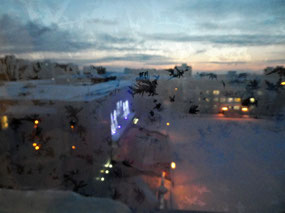
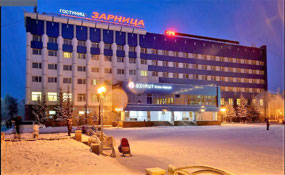
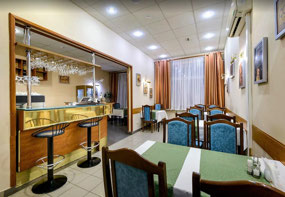
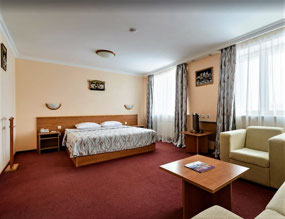
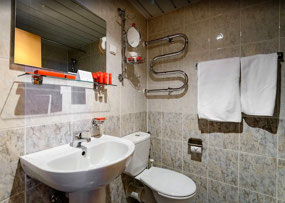
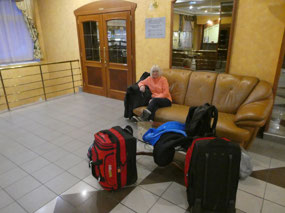
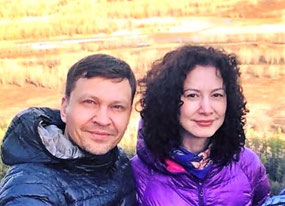

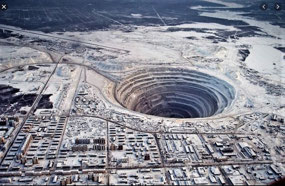
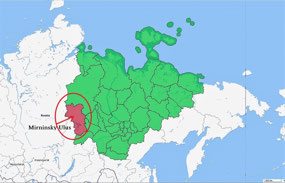
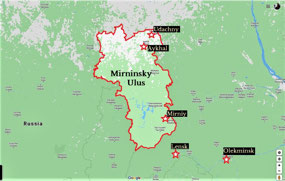
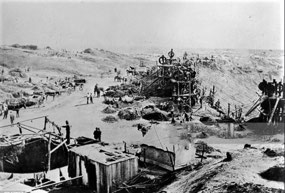
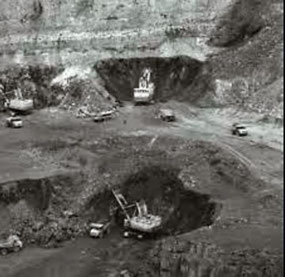
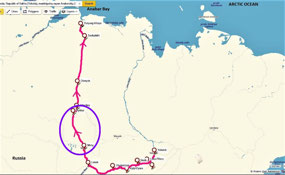
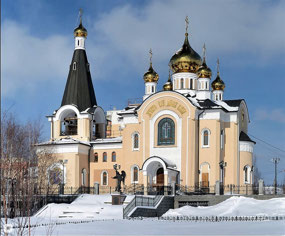
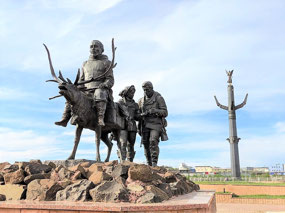
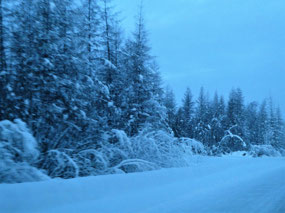
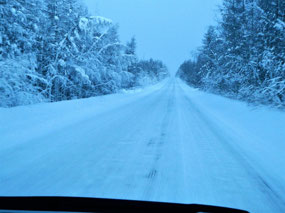
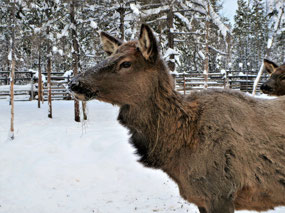
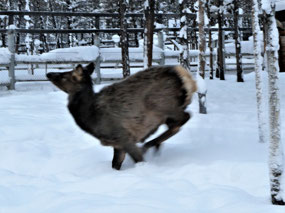
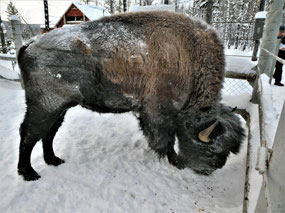
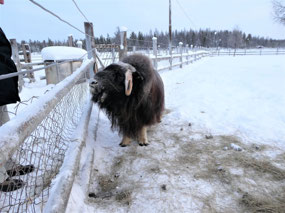
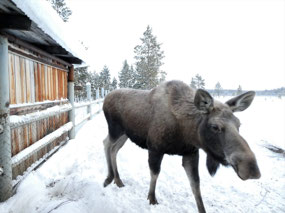
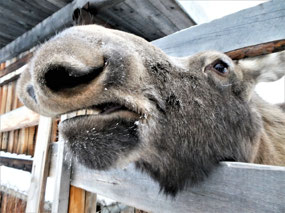

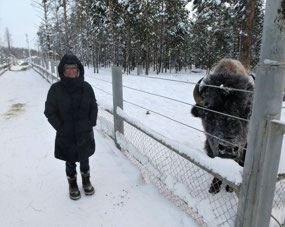
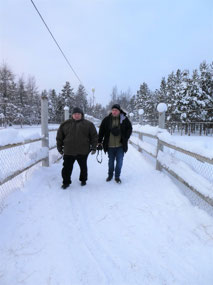
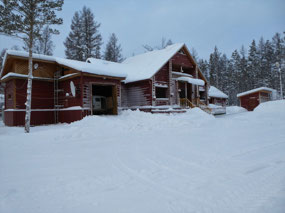

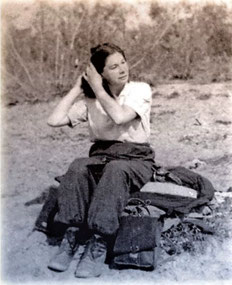
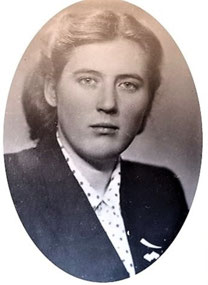

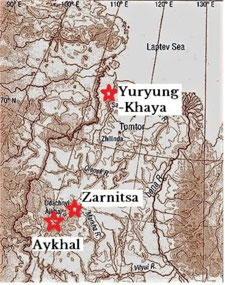
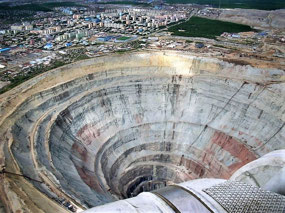
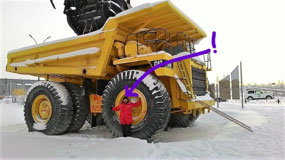
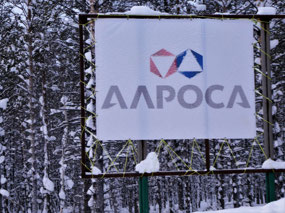
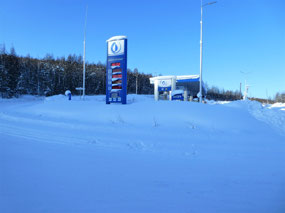
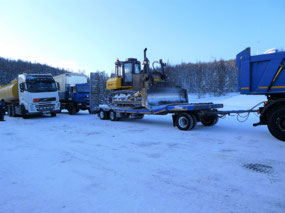
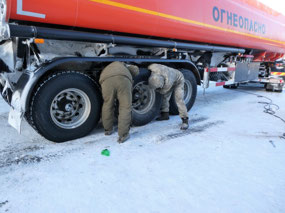
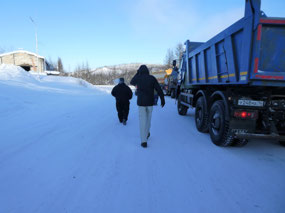


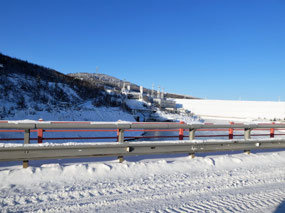

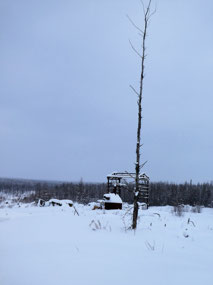
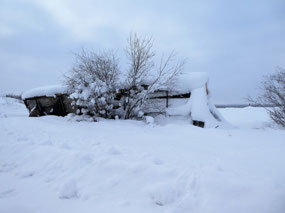

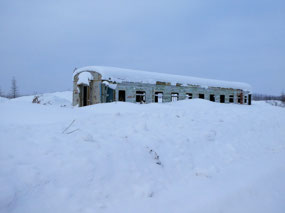
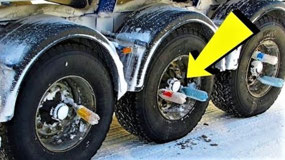

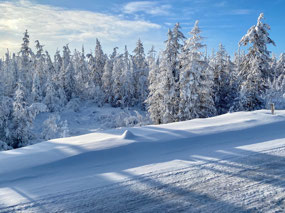
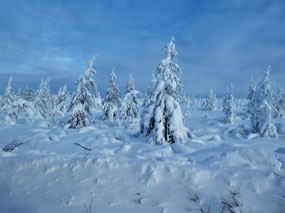
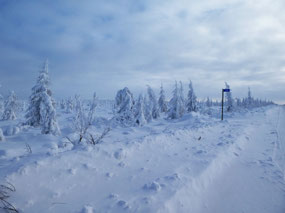
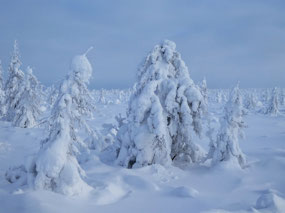
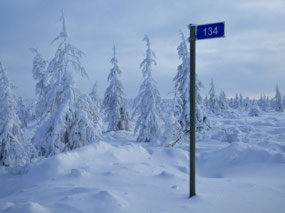
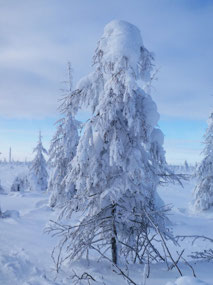
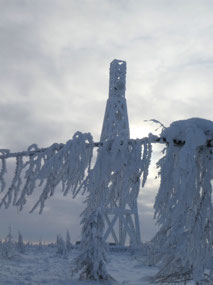
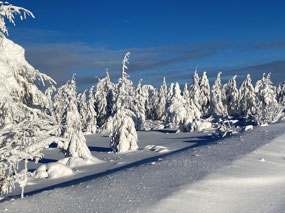
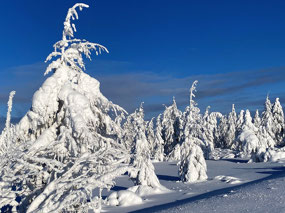
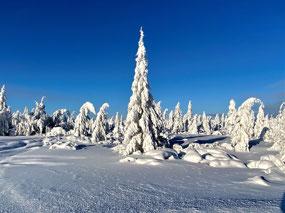
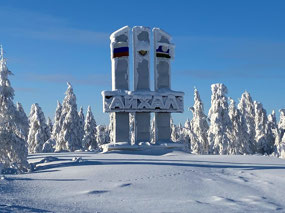


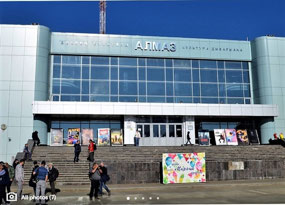
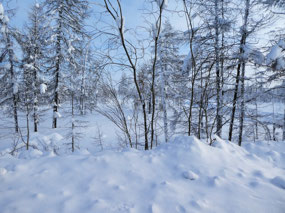

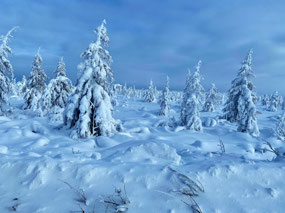
Grant Ashwell
2020-07-28
Amazing..
Alex van den Tweel
2020-07-28
Pretty amazing. I have seen similar environments but to see it so pristine is quite amazing. Fantastic narrative and informative!!
geoff nattrass
2020-08-01
more amazing tales